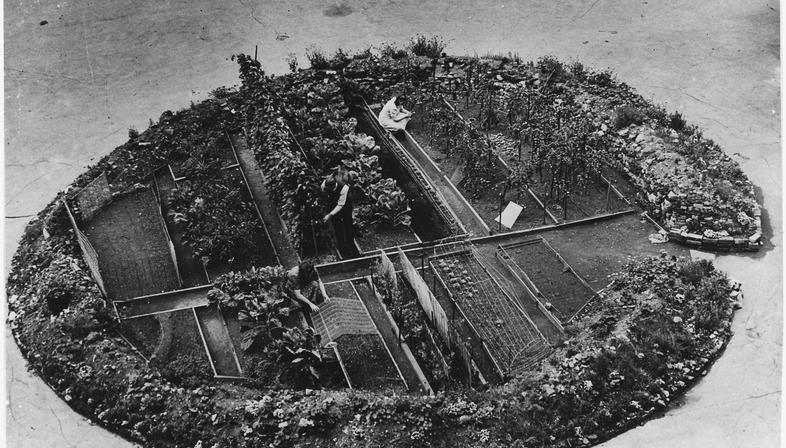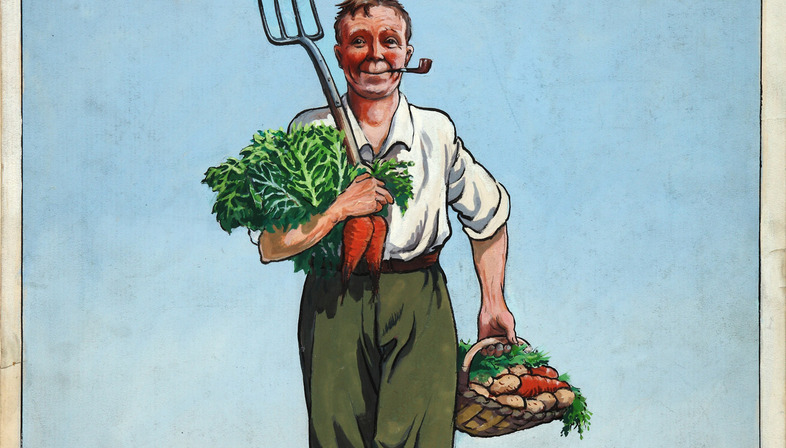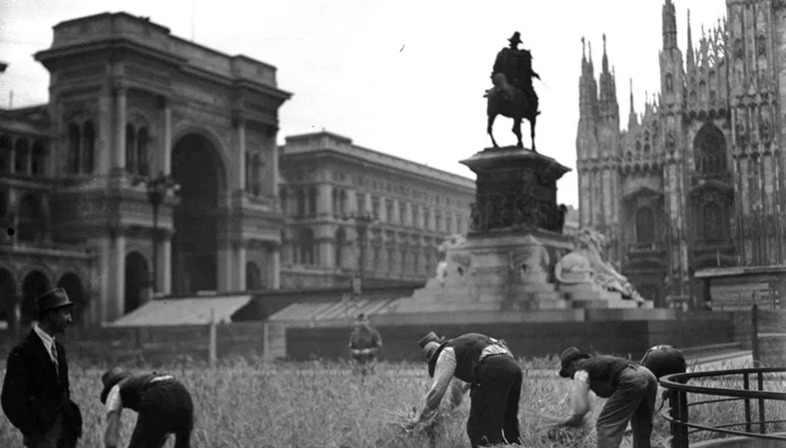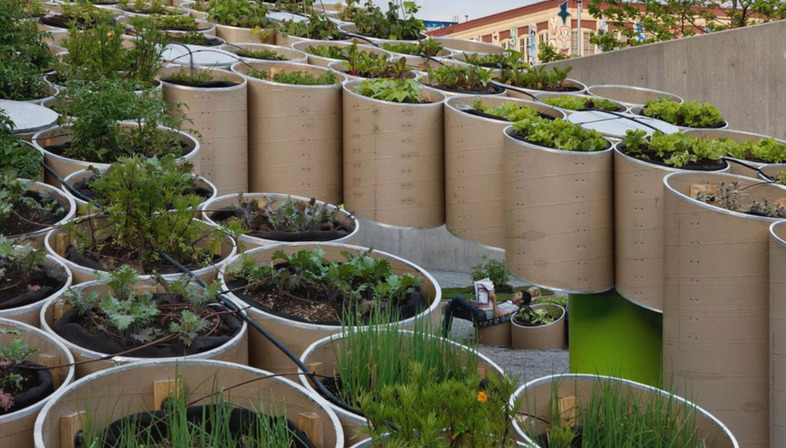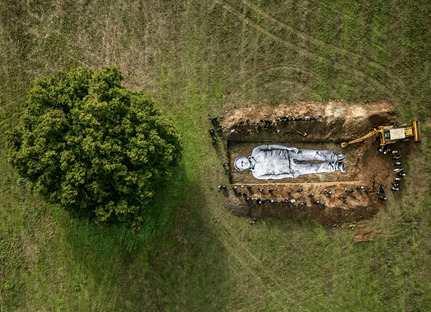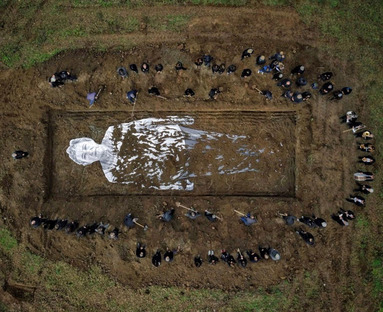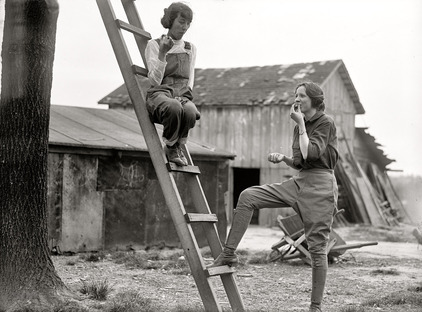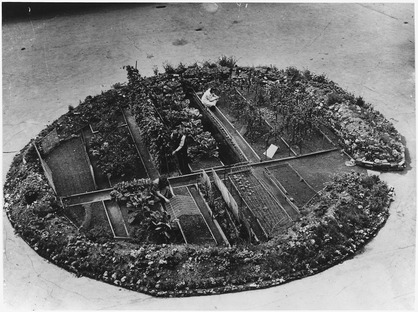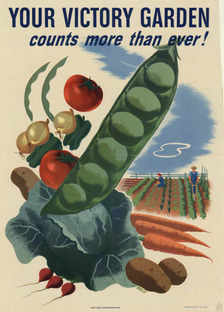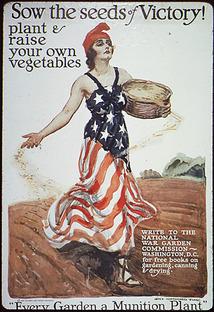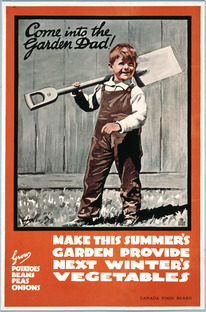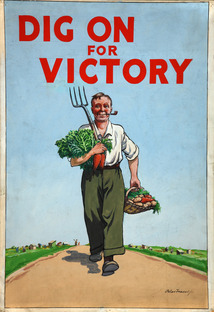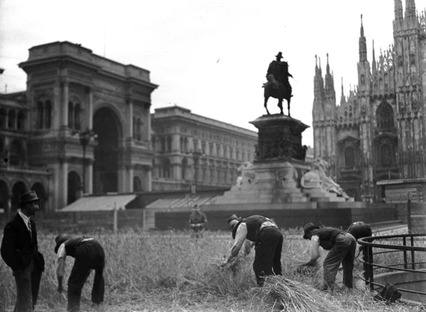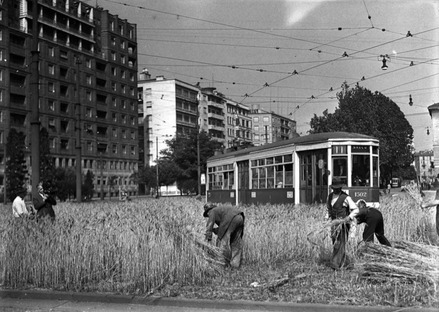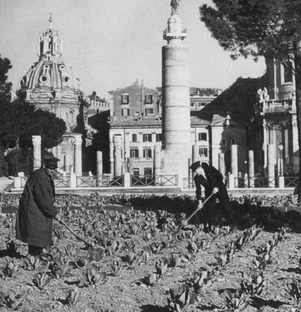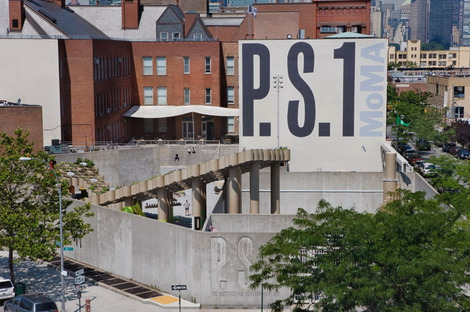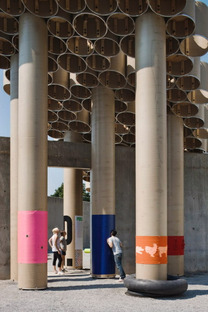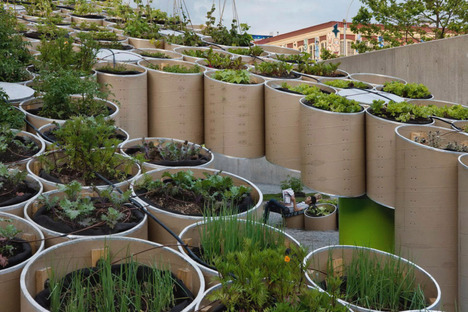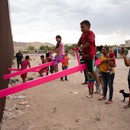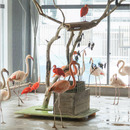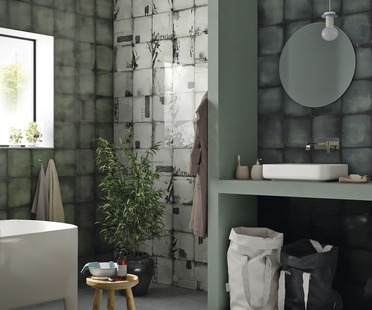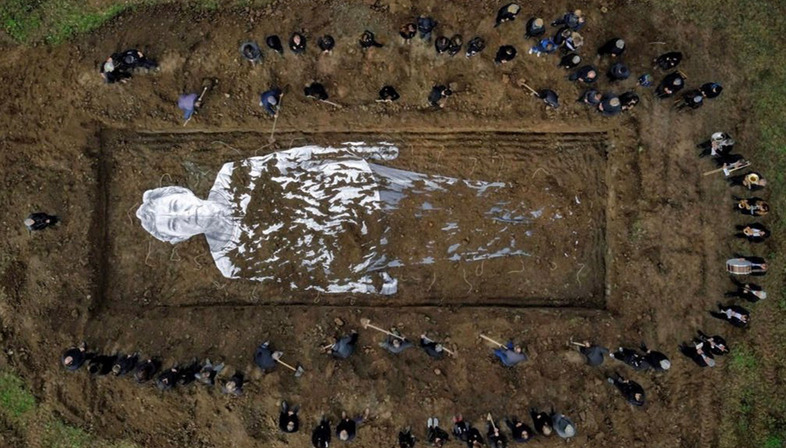
Paused...
And even if the land is now cultivated less manually, his words sound premonitory of a growing desire, especially among young people, to recover and preserve the heritage of a certain type of life and make it their future. One of the reasons that perhaps pushes to pursue a totally different daily life is the attraction to an existence more in contact with a missing nature and to that physical tiredness able to cause a state of serenity and mental well-being. A piece of land to cultivate, to which, as we read, some have decided to try to dedicate themselves, is certainly not an easy activity and I think it can give certain economic worries, especially to those who do not have big budgets to invest. Sometimes, however, these small initial plots expand and the adventure turns into a career.
It is not the first time that a return to the world of agriculture has occurred, partly obliged by a contingent situation of need and also by the hope to be helpful towards the family and the community. During World War I and II, food production dramatically dropped, agricultural labor was recruited into military service and many farms devastated by the conflict. This situation gave rise, especially in the United States, United Kingdom and Germany, to the so-called 'Victory gardens' movement, improvised gardens born in private residences and public parks, encouraged by the government to integrate the scarce food resources but also to help the people who, taking care of them, could feel morally gratified. A vast campaign from postage stamps to pamphlets, to advertising images of large colored posters, with slogans such as: "Grow your own, you can do it ", "A Vegetable Garden for Every House", "Dig for Victory”, supported this effort of solidarity, a contribution that combined practical utility with the awareness of cooperating for the realization of an important, noble ideal.
'Victory gardens' in London during WWII. Wiki/photo.
Backyard spaces were utilized to plant vegetables, to keep hens for the purpose of collecting eggs for personal use and war effort, women's organizations brought expert gardeners into the schools to involve children and their families. In addition to the uncultivated land that could be found everywhere, sports fields and golf courses were required for the cultivation, ornamental gardens and every small private space was used to collect a little bit of everything, but above all, medicinal herbs, which could replace the drug scarcity. In the United States about a third of the vegetables production came from the Victory Gardens and there are very significant examples of the political propaganda in support of this patriotic duty, from Woodrow Wilson, who had let the sheep graze on the White House’s lawn avoiding the use of lawn-mowers to Eleanor Roosevelt who, again in the presidential residence, had cultivated a large plot. Even in France and in the Soviet Union the practice of urban agriculture was supported by ordinances and incentives from the state. In Italy, during fascism, the so-called war gardens were in the heart of big cities, in private homes or in public spaces, and invited to the cultivation of wheat, vegetables and fruit. Threshing took place in the main squares with sheaves covered by tricolor flags.
In the 1950s, when the war ended, there was an enormous expansion of the suburban area in the United States, saturated by a feverish spread of single-family houses, whose front lawn, perfectly manicured, embodied the prosperity of the postwar period, the American dream everyone aspired to. From the sustenance function, the garden returns to the purely aesthetic one. There is an architect and artist who felt the need to intervene on this space which has become, as some will call it " the living version of broadloom carpeting”. Embittered by the fact that, once ended the urgency to provide for the survival of the country, the dialogue nurtured by the small garden has been also interrupted, he decided to dedicate himself to a project that, far from any form of imposition, wanted to witness the rebirth of that community spirit that characterized the Victory gardens, in this case not "top-down" government-inspired but rather spontaneously promoted "from below", by the owners. It is with this intent that one of his many projects begins, with an apparently simple premise, that gradually reveals great complexity due to the various thematics embraced. Gardenlab is conceived as a whole of different proposals, aimed at exploring, through site-specific interventions based on ecology, the possibility of changing the relationship between private and community, creating interrelationships. The particularly interesting initiative, in between pleasure and serious commitment, reflects the versatility that distinguishes the author.
The ‘Edible Estates’, part of the program, develop from an idea of 'delawning', transforming domestic lawns into highly productive edible landscapes with the involvement of the family owner, which will follow the growth with a sense of responsibility and will to collaborate, regularly noting changes and progress in a journal. It is a sort of small revolution, consisting not just in replacing the lawn with auctochthonous plants and vegetables, but in contemplating a new meaning of 'beautiful', not intended in an aesthetic sense, but rather in a social way, an opening toward the streets, leaving the household, no longer seen as an 'insulating cocoon'. “ A wonderful opportunity", as the author states, "to reconsider how we're living, which I don't think is so great anyway”. The interventions explore numerous aspirations such as the cultivation of local products, the fight against use of chemical pesticides and water saving, but the imperative that drives Fritz Haeg's research and efforts is essentially one: to provoke a sense of community in urban and suburban neighborhoods.
His projects are not limited to unraveling a situation that is occurring, but they intervene, participating and triggering participation as real performative installations. An ever numerous team of students and experts in the many sectors of planning and design involved, accompanies him in the organization and implementation of the works. The position of the lawn that becomes a vegetable garden, necessarily part of the lot in front of the house, and therefore clearly visible from the street, represents not only a radical abandonment of the common tendency of showing a meadow plot as a symbol of a social condition, but it is also a declaration of independence and freedom, of rebellion against a widespread behavioral tendency marked by homologation. The metaphor is explicit, it speaks about cultivation of an expensive garden on private land for public good. It is like saying that a citizen renounces his isolation, seeking true interactivity with his own community.
From the planting of the first Edible Estates in Salina, Kansas, others alternated, arriving at a subsequent series of realizations born in highly visible locations, no longer using lots in front of home, able to exert maximum impact and influence, perhaps even through the contrast with a surrounding urban landscape, mainly in concrete, trying to suggest more responsible and natural ways of life. Many parts of the world, Budapest, Istanbul, Rome, Manhattan, Los Angeles, London, have welcomed these installations up to the most recent proposals for Tel Aviv, Stockholm and Minneapolis. Innumerable performance-works of this real activist as well as curator, able to elude the boundaries between architecture and art, have been commissioned and exhibited by museums and art institutions, such as the Tate Modern, London, Whitney Museum of American Art, San Francisco Museum of Modern Art, for the interest they embody above all from an educational point of view: celebrating the ethics of a collaborative and socially active work, by strengthening a dialogue on personal responsibility for public good. Haeg’s interventions, even if deliberately isolate the fragment of a situation, know how to spark interest and expand the problem that the slightest clue hides. Inspirational for the questions they arise they activate empathy, giving the viewer a reason to feel involved, become actor and protagonist.
In support of a trend, which will emerge as an increasingly urgent and widespread demand, in favor of the reintroduction of urban greenery for the holistic well-being of the community, there is another small, but very elaborate intervention, extremely accurate in every detail that deserves to be mentioned, for its intelligent and pleasant imprint. Years ago, in 2008, WORK ac studio won the competition annually launched by MoMA PS1, for giving young talents the opportunity to stand out, with a temporary installation in the courtyard of the museum. It is particularly significant how the proposal, quite unusual, succeeded considering the festive atmosphere, somewhat in 'urban beach' style, privileged in previous editions. The life of the city has managed under many respects to redeem itself, proving to be even superior to its suburban counterpart, nevertheless it lacks an important aspect, belonging to the countryside. PF 1, Public Farm1, a half-acre working 'urban farm', hoisted 30 feet high, wishes to focus attention on this absence. The young architects intended to present an architectural and urban manifesto, helping to rethink and reinvent free time, I could say in a revolutionary way, at the same time “a symbol of liberation, knowledge, power and fun”. PF 1 is a fully functioning and self-sufficient small-scale complex, capable of growing 50 varieties of local fruits and vegetables. A very large team of collaborators, with different, specific competencies has worked to implement "this new breed of sustainable infrastructure, capable of generating its own power, recycling rainwater, cultivating crops, and encouraging leisure”, demonstrating that “even the most impossibly utopian visions of green city living are within our reach”.
The unusual, visionary suspended farm structure, powered by solar energy and irrigated by a rainwater harvesting system consists of a sustainable infrastructure, composed by innovative materials, biodegradable and recyclable cardboard cylinders. Under the shade of these containers, arranged in a flower configuration, the public can sit down, recharge phones and enjoy one of the cocktails and infusions prepared with part of that great variety of organic fruit, vegetables and herbs available. "A handmade piece of pragmatic poetry", is the beautiful expression with which Fritz Haeg has defined this creation, that makes louder an urgency to be addressed, especially appreciating the strong vital energy it releases, “alive, both in the lives of the plants that it supports and in the lives of the many sorts of people that converged on a conversation to dream it up, build it and tend it”. The leading couple who, again in his words 'shepherds', leads a team "that has expanded to include an exciting breadth of human endeavor: farmers and engineers, art curators and solar energy experts, university students and experimental soil companies, graphic designers and chicken farmers “.
Virginia Cucchi
Credits:
Cover image/photo 1: Omelia Contadina, film director, Alice Rohrwacher & artist, JR : http://omeliacontadina.com/ Cineteca Bologna: Visioni Italiane 2020, Omelia Contadina: https://www.youtube-nocookie.com/watch?v=a-vroGeqoLQ
02-07 Photo : Victory Garden, Wiki, Public Domani
08-10 Photo: Orti di Guerra, during WW2, Archive.
11-13 Photo: PF.1 Farm, WorkAc, Archive of Architectseries, photo di Elizabeth Felicella/courtesy of WorkAc










